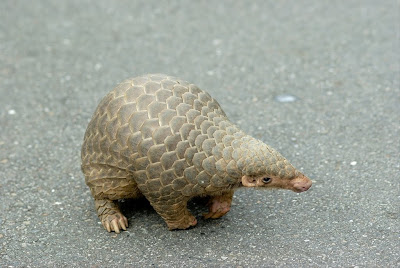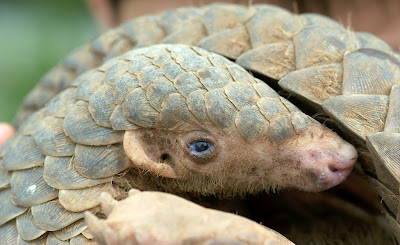Borneo Dispatches #37: Bornean Short-tailed Python + Sundews
Borneo Dispatches #38: Bornean Leaf-nosed Pitviper
Borneo Dispatches #39: Invertebralooza!
Borneo Dispatches #40: Another Bornean Short Python...
Borneo Dispatches #41: Dulce et decorum est...
Borneo Dispatches #42: The Reluctant Naja Nemesis
Borneo Dispatches #43: Too Bloody Many Short Pythons
Borneo Dispatches #44: The Coolest Eyes in LizardDom
Borneo Dispatches #45: The Saga of Snake And Pangolin
A Face Only a Mother Could Love
Borneo Dispatches #46: Red-sided Keelback (X. trianguligera)
Borneo Dispatches #47: Family Night in the Jungle
Borneo Dispatches #48: Flying Boigas, Spotted Loris
Borneo Dispatches #49: Wolfsnakes & The Trans Borneo Highway
Borneo Dispatches #50: Boiga-Bitten
Borneo Dispatches #51: Red Trimeresurus borneensis
Borneo Dispatches #52: The Python and the Pussycat
Borneo Dispatches #53: "Kiwi Nebula" Malayan Racer
NOW IN STORES: My book "A Cobra Hijacked My Camera Bag!"
Borneo Dispatches #54: Sunda Slow Loris
Borneo Dispatches #55: Peter's Bent-Toed Gecko
Borneo Dispatches #56: Eight Snakes, Plus Bonus Borneo Bits!
Borneo Dispatches #57: Paradise Flying Snake
Borneo Dispatches #58: The things you roadcruise in Borneo
Borneo Dispatches #59: 2 Mean-Fanged Snakes + Tarantula
Borneo Dispatches #60: Seven Snake Adventures
Borneo Dispatches #61: Boiga jaspidea "Black Velvet"
Borneo Dispatches #62: Three Pretty Little Snakes
Borneo Dispatches #39: Invertebralooza!
Borneo Dispatches #40: Another Bornean Short Python...
Borneo Dispatches #41: Dulce et decorum est...
Borneo Dispatches #42: The Reluctant Naja Nemesis
Borneo Dispatches #43: Too Bloody Many Short Pythons
Borneo Dispatches #44: The Coolest Eyes in LizardDom
Borneo Dispatches #45: The Saga of Snake And Pangolin
A Face Only a Mother Could Love
Borneo Dispatches #46: Red-sided Keelback (X. trianguligera)
Borneo Dispatches #47: Family Night in the Jungle
Borneo Dispatches #48: Flying Boigas, Spotted Loris
Borneo Dispatches #49: Wolfsnakes & The Trans Borneo Highway
Borneo Dispatches #50: Boiga-Bitten
Borneo Dispatches #51: Red Trimeresurus borneensis
Borneo Dispatches #52: The Python and the Pussycat
Borneo Dispatches #53: "Kiwi Nebula" Malayan Racer
NOW IN STORES: My book "A Cobra Hijacked My Camera Bag!"
Borneo Dispatches #54: Sunda Slow Loris
Borneo Dispatches #55: Peter's Bent-Toed Gecko
Borneo Dispatches #56: Eight Snakes, Plus Bonus Borneo Bits!
Borneo Dispatches #57: Paradise Flying Snake
Borneo Dispatches #58: The things you roadcruise in Borneo
Borneo Dispatches #59: 2 Mean-Fanged Snakes + Tarantula
Borneo Dispatches #60: Seven Snake Adventures
Borneo Dispatches #61: Boiga jaspidea "Black Velvet"
Borneo Dispatches #62: Three Pretty Little Snakes
Borneo Dispatches #63: Scraping the Barrel
Borneo Dispatches #64: Roadcruising Study (HELP REQUEST!)
Borneo Dispatches #65: IMS (Insane Mimicry Spider) ID PLEASE
Borneo Dispatches #66: Monster Bug! (Dragon-headed Katydid)
Borneo Dispatches #67: Shuriken Turtle
Borneo Dispatches #68: Phantasmagasmical Photo Phalanx!
Borneo Dispatches #69: Sibynophis! Hymenopus! Chalcosoma!
Borneo Dispatches #70: Boiga drapezii, green morph
Borneo Dispatches #71: Sumatran Pitviper (Parias sumatranus)
Borneo Dispatches #72: Rare Snake (?), Common Snake (?)
Borneo Dispatches #73: The Frogs and Freaks of Summer
Borneo Dispatches #74: Stray Cats vs. Spitting Cobra
Borneo Dispatches #75: Tarsiers, Wallacians & Token Kraits
Borneo Dispatches #76: Mean Green Ratsnake Machine
Borneo Dispatches #77: A Spring Collection
Borneo Dispatches #78: Cobra Rasslin', Ozzie Style
Borneo Dispatches #79: Eleven Reed Snakes In Five Minutes
Borneo Dispatches #80: The King and Us
Borneo Dispatches #81: Spitter Baby
Borneo Dispatches #82: Exploring Planet Kinabalu
Borneo Dispatches #83: Peter's Forest Gecko
Borneo Dispatches #84: What happened to Borneo Dispatches?

























